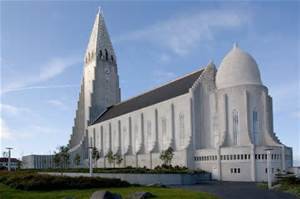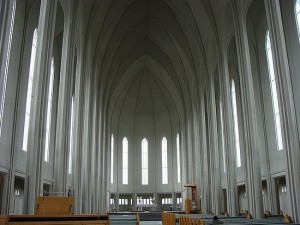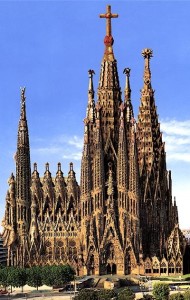The person of Mary and her role in salvation history is a huge paradigm shift when moving from evangelical non-denominational Bible Christianity to the traditions of a Divine and Catholic Faith. It is so large and complex it is often cited as the last theological obstacle when conversion takes place and even then it is mostly an assent of the will.
Protestant denominations vary greatly on their veneration of the person of Mary but evangelicals tend to give her little to no veneration outside the season of Christmas. Scripture, the key source of teaching and authority in Protestant Christianity, says little about her role in salvation history outside the virgin birth of Jesus. Protestants also take issue with Catholics who “worship” Mary and claim she remained a perpetual virgin, citing places in scripture where it mentions Jesus’ “biological” brothers and sisters [Matthew 12:47; James, bishop of Jerusalem, writer of the same letter and the so-called brother of our Lord]—hence, Mary must have had other children, presumably by Joseph later on [Matthew 1:25 is particularly vivid]. And this must be so because, as an axiom, the Scripture is inerrant. Mary ultimately becomes an important and useful “servant” or handmaid of the Lord with no more significance than other notable characters of the Bible.
Catholic Sacred Tradition tells a very different story altogether. First, Mary was immaculately conceived meaning that she did not have the stain of original sin. Mary was prefigured in Genesis 3 (Protoevangelium) and by the Ark of the Convenant in the Old Testament, being a sacred vessel containing the law, the priesthood, and the manna (bread of life) in the person of Jesus Christ. After Jesus’ nativity, she remained a Virgin and did not bear any other children. She suffered with Christ in His Passion as the prophet Simeon predicted in Luke 2:35. After taken in by the disciple John (behold your mother), she moved to Ephesus and was later assumed into heaven and there reigns as the Queen (specifically not as a king’s wife in the European monarchies but has the mother of the king in the Davidic dynasties) of Heaven according to Revelations 12 and intercedes on behalf of the Church militant. She is explicitly not worshipped which is reserved for God alone, but venerated as the first apostle and the person through which dual-natured Jesus obtained His humanity. She is not a goddess, but the mother of God, the God-birther, or the Theotokos. She is unique in human history and the Bible says “all generations shall call her blessed”. She’s a super big deal in Catholicism and its incredibly dishonoring to God and “Our Lady” to think that she only gave birth to Jesus Christ as if God simply needed a temporary surrogate rent-a-womb then faded her to black.
Analysis
I once thought, If Mary is so important to salvation history why does the Bible speak very little about her? It is important to note that not all of what we know about God, Jesus, and the New Covenant is necessarily written down in Scripture. See the earlier Paradigm essay on the source of Authority. The Bible was compiled in the fourth century to normalize the liturgy of the word carried on in the early church. It was not compiled to be the encyclopedic reference for all that we know and understand about God. On the contrary, the Bible even says that there was much Jesus had said and done that was not written down. See John 21:25. Do you think some of that missing material was important?
Even still, what little the Bible does say should at least reflect what the Church transmits and teaches about Mary. Although there are a number of Marian doctrines we could examine, clearly, the one idea that she is a perpetual virgin is totally orthogonal to the text—it’s clearly wrong.
Or is it?
First, belief in Mary’s perpetual virginity is not really a big game changer—it may or may not have a big impact on Christians system of belief. Nevertheless, it may interest one that the Catholic Bible also uses the words “brethren”, “brothers”, “sisters”, “siblings” to translate the same passages like Matthew 12:47. They don’t try to wash it out with their own translational fudging. However translated, the Church is keen to point out that these words are used because in the original language and culture of first century Palestine, these were common words to connote relatives of various sorts. Even today, a complete stranger might be addressed as “brother” in the Middle East. In Sub Saharan Africa, adult friends of a family are addressed as aunt and uncle even if they are not related by blood whatsoever. And today in Hawaii everyone is called “brah”. This practice is actually more common than not in considering all the cultures of the world.
Hebrew and Aramaic have words for father, mother, father-in-law, mother-in-law, uncle, aunt, brother, and sister. To describe any other relation, such as cousin, half-sibling, nephew, relative, kinsman, or close friend, they used the word for ‘brother’. In these languages the designation “brother” is not linguistically restricted to an actual individual from the same mother, and therefore one cannot base an argument against the perpetual virginity of Mary on the fact that there are individuals in the New Testament called “brothers” of Jesus.
But it may surprise Evangelical Christians that the Protestant Reformers believed in Mary’s perpetual virginity too—it’s not just a Catholic thing:
- Martin Luther on the Virginity of Mary: “It is an article of faith that Mary is Mother of the Lord and still a virgin. … Christ, we believe, came forth from a womb left perfectly intact” (Weimer’s The Works of Luther, English translation by Pelikan, Concordia, St. Louis, v. 11, pp. 319-320; v. 6. p. 510).
- John Calvin on the Virginity of Mary: “Helvidius has shown himself too ignorant, in saying that Mary had several sons, because mention is made in some passages of the brothers of Christ.” Calvin interpreted ‘brothers’ in these contexts to refer to cousins or relatives (Bernard Leeming, “Protestants and Our Lady”, Marian Library Studies, January 1967, p.9).
- Ulrich Zwingli on the Virginity of Mary: “I firmly believe that Mary, according to the words of the gospel as a pure Virgin brought forth for us the Son of God and in childbirth and after childbirth forever remained a pure, intact Virgin” (Zwingli Opera, Corpus Reformatorum, Berlin, 1905, v. 1, p. 424).
- Ulrich Zwingli on the Virginity of Mary: “I esteem immensely the Mother of God, the ever chaste, immaculate Virgin Mary …; Christ … was born of a most undefiled Virgin” (Stakemeier, E. in De Mariologia et Oecumenismo, Balick., ed., Rome, 1962, p. 456).
It’s only in our modern and secularized Christianity of the last century or so that this doctrine has been thrown under the bus. But why? Did millennia of Catholic and Protestant theologians and scholars get it wrong?
There are other proofs that Mary did not have any children other than Jesus. The fact that Jesus committed Mary to the care of his disciple John (behold your Mother) shows that Mary had no other children, otherwise they would have taken custody of her as would be their familial duty.
Alas, as always, the naked text of the Bible can be marshalled to any defense by those so willing. But taking another approach, in the following passage, apologist Scoot Hahn supports Mary’s Perpetual Virginity by appealing to our understanding of the sacred and the Old Testament.
God gave her singular graces because of her unique role in history. He made her sinless from the moment of her conception. He called her to be “Ever-Virgin.” Why? Because she was to become the vessel of God’s presence in the world! Now, the vessels used in the temple service were made, by God’s command, of the purest, most precious metals; and they were reserved only for sacred use. You could not repurpose the temple’s golden altar as an end table. You could not take the chalice used for libations and fill it with a cold beer on a hot summer night. Apart from the temple service, even the finest wine would profane the sacred vessels. It’s not that there’s anything wrong with end tables or alcoholic beverages, but the temple vessels were sacred and for God’s use only. Mary’s body was that kind of vessel. Once blessed with God’s presence, she could not simply “retire” and resume an ordinary married life. What would be permissible and even honorable for others would be a profanation for the Mother of God. And it should go without saying that God would preserve the vessel of his presence from contamination by sin. [Hahn, Scott (2014-05-27). Angels and Saints: A Biblical Guide to Friendship with God’s Holy Ones (Kindle Locations 1822-1831). The Crown Publishing Group. Kindle Edition.]
Something to think about.





